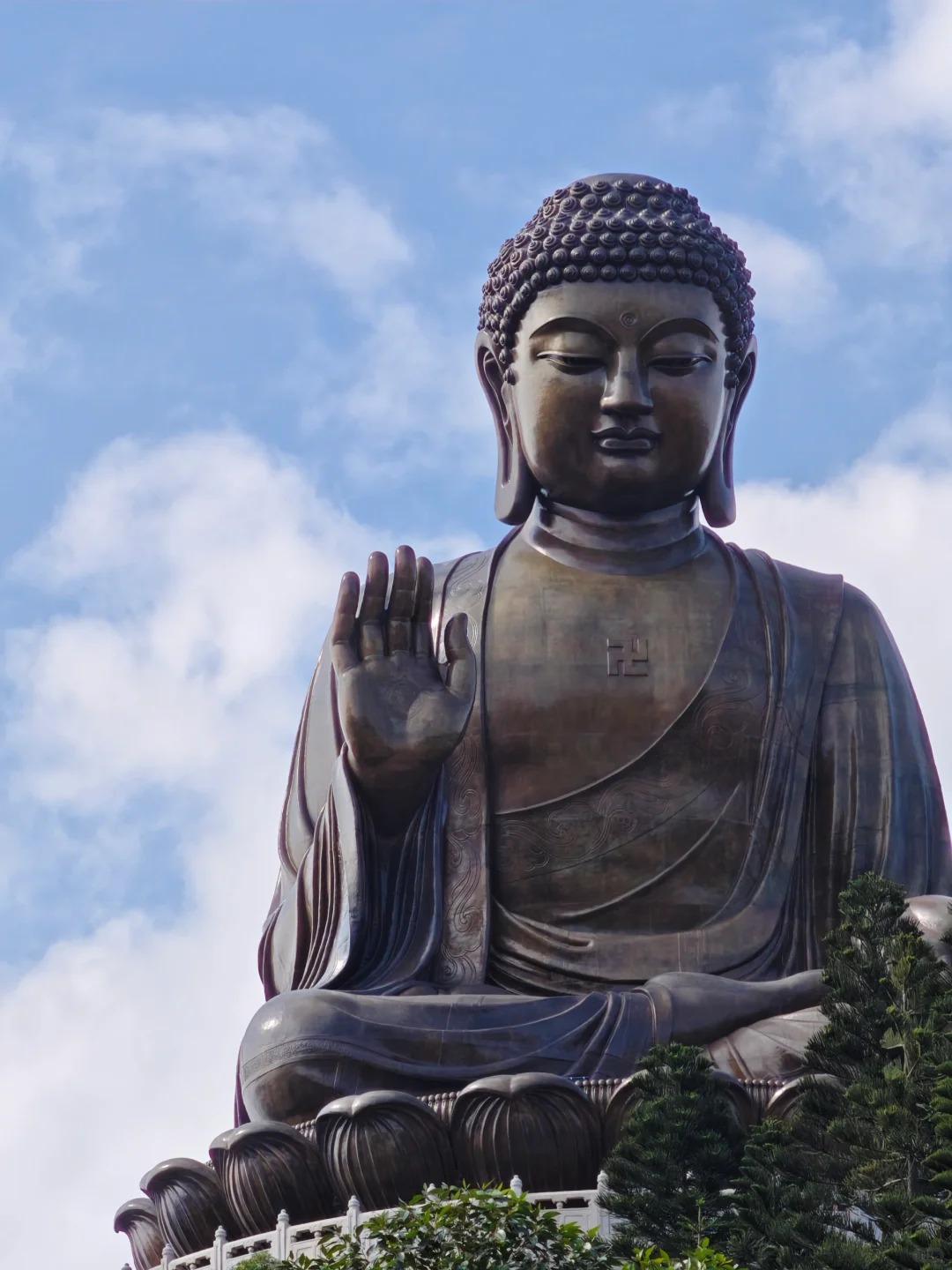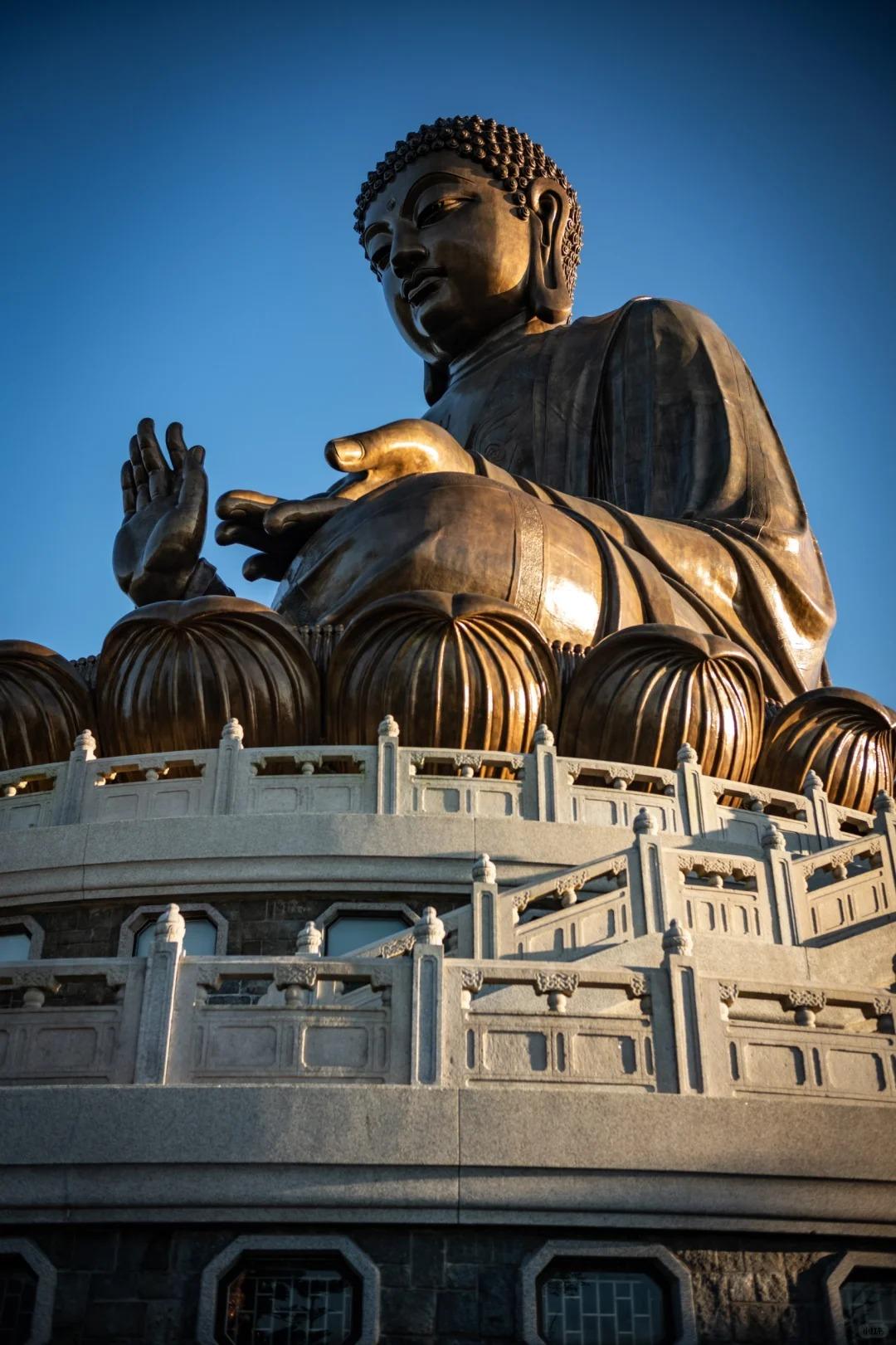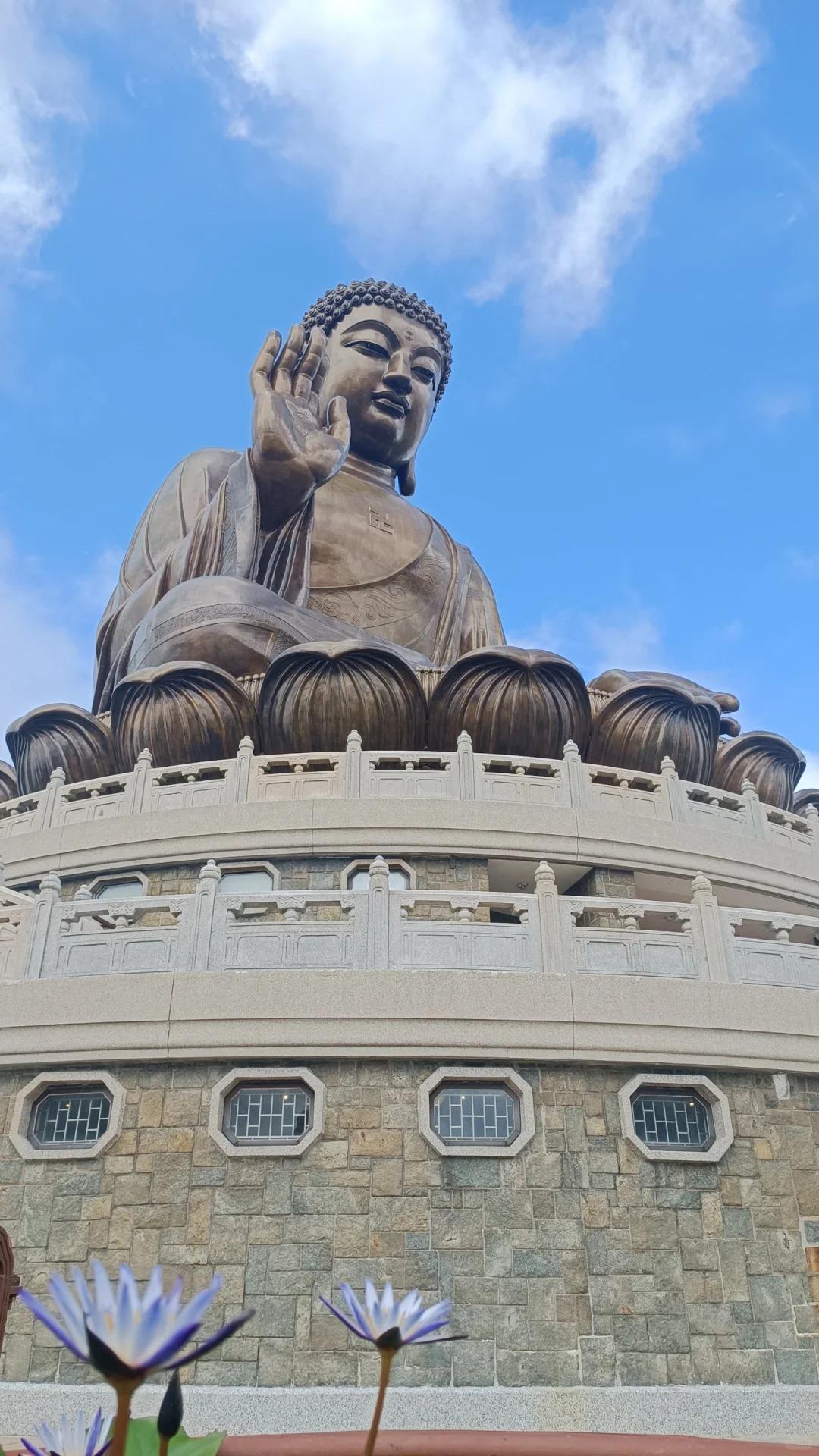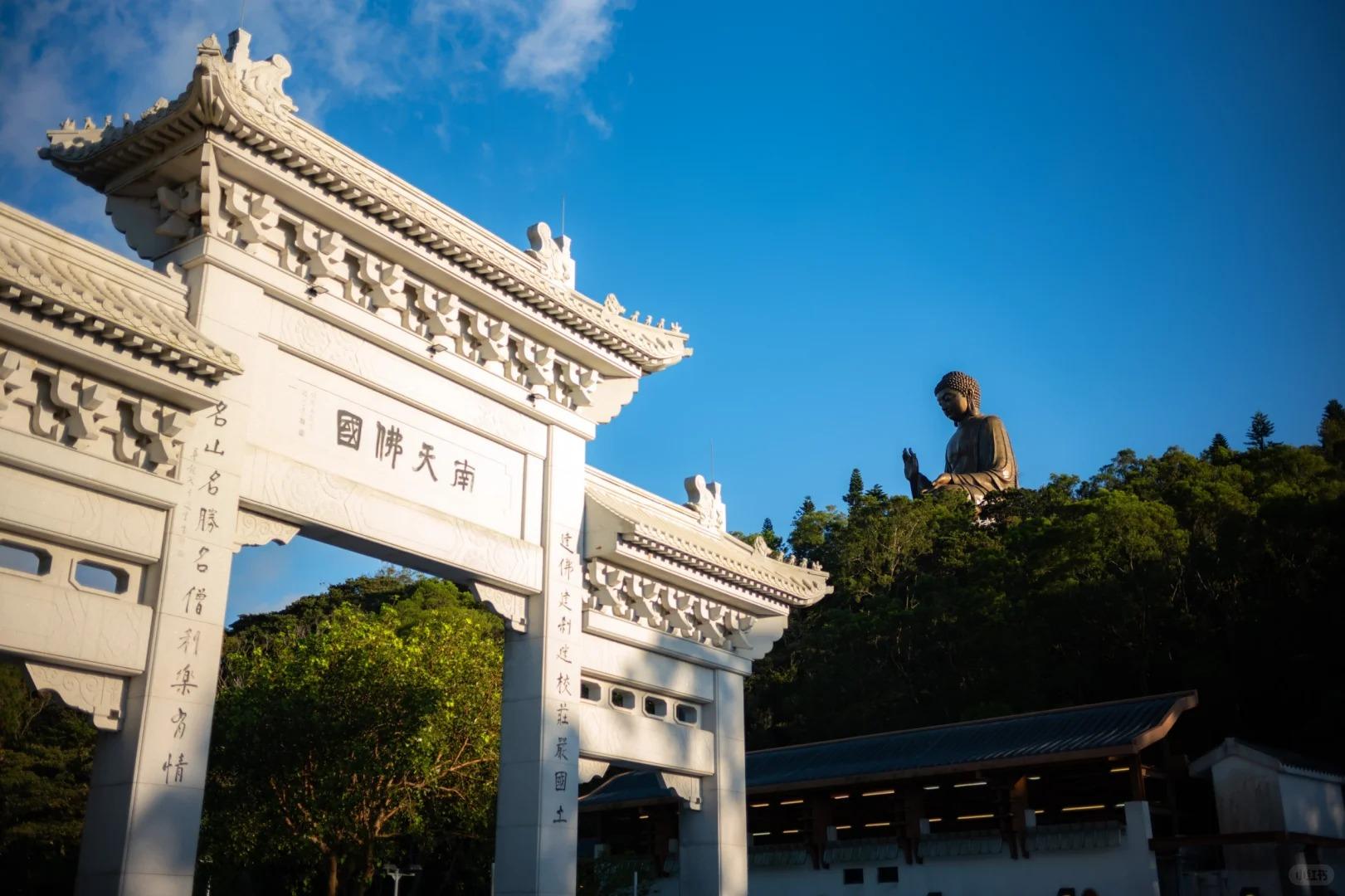Introduction to the Big Buddha
Perched atop Lantau Island’s Muk Yue Shan peak, the Tian Tan Buddha, affectionately known as the Big Buddha, stands as an iconic symbol of Hong Kong’s spiritual heritage. This colossal bronze statue, visible from miles away, has become one of Hong Kong’s most recognizable landmarks since its completion in 1993.
Rising 34 meters (112 feet) high, the Big Buddha draws millions of visitors annually, serving as both a major tourist attraction and a significant religious site. Its commanding presence offers a unique blend of spiritual significance and breathtaking panoramic views, making it a must-visit destination for travelers and pilgrims alike.

History and Construction
The Big Buddha project was conceived in the 1970s as part of an initiative to establish a Buddhist sanctuary on Lantau Island. Construction began in 1990 and was completed in December 1993, funded entirely by donations from devotees in Hong Kong, Mainland China, and other countries.
| Construction Details | |
|---|---|
| Completion Date | December 1993 |
| Construction Period | 3 years |
| Funding | Public donations |
| Main Material | Bronze |
The statue’s design and location were carefully chosen for their symbolic significance. Facing north to look over the Chinese people, the Buddha’s right hand is raised to deliver a blessing, while the left rests on his lap, representing happiness and satisfaction.

Physical Characteristics and Design
The Big Buddha’s impressive statistics include:
- Height: 34 meters (112 feet)
- Weight: Over 250 metric tons
- Base Diameter: 15 meters (49 feet)
The statue depicts Amoghasiddhi Buddha in a seated position, embodying the perfection of wisdom. Its serene facial expression conveys compassion and inner peace, inviting visitors to reflect and meditate.
Ascending the 268 steps to reach the statue is an integral part of the pilgrim’s journey, symbolizing the path to enlightenment. The surrounding platform offers panoramic views of Lantau Island and the South China Sea, while six smaller bronze statues, known as “The Offering of the Six Devas,” encircle the main statue, each presenting offerings to the Buddha.

Cultural and Religious Significance
For Buddhists, the Big Buddha represents an important pilgrimage site, housing a relic of Gautama Buddha within its base. It stands in harmony with the adjacent Po Lin Monastery, creating a spiritual complex that attracts devotees from across Asia.
The site hosts various religious ceremonies throughout the year, including:
- Buddha’s Birthday celebrations (May)
- Chinese New Year rituals
- Regular blessing ceremonies
Beyond its religious importance, the Big Buddha has become a cultural icon, significantly boosting tourism to Lantau Island and showcasing Hong Kong’s diverse heritage. It has transformed the once-quiet island into a bustling spiritual and tourist center, contributing to the local economy and cultural landscape.

Visitor Experience and Surrounding Attractions
The journey to the Big Buddha is an experience in itself. Most visitors opt for the Ngong Ping 360 cable car, a 25-minute scenic ride offering breathtaking views of Lantau Island and the approaching Buddha statue.
At the base of the statue, visitors can explore:
- Po Lin Monastery, with its ornate architecture and peaceful gardens
- The Grand Hall of Ten Thousand Buddhas, showcasing intricate Buddhist artwork
- Ngong Ping Village, offering souvenir shops, restaurants, and cultural exhibits
Nature enthusiasts can enjoy several walking trails around the area, including the Wisdom Path, a series of wooden columns inscribed with the Heart Sutra.
Best Times to Visit and Photography Tips
The best time to visit is typically from October to December when the weather is mild and skies are clear. Early mornings offer the best lighting for photography, with fewer crowds.
For photographers:
- Use a wide-angle lens to capture the statue’s full magnitude
- Consider visiting during the golden hour for warm, dramatic lighting
- Include the surrounding mountains in your composition for scale
Special events like the annual Buddha’s Birthday celebration in May provide unique photo opportunities and cultural experiences.

Practical Information for Travelers
To reach the Big Buddha:
- Take the MTR to Tung Chung Station
- Choose between the Ngong Ping 360 cable car or Bus 23 from Tung Chung
Entrance Fee: Free (museum inside the Buddha has a separate fee)
Opening Hours: 10:00 AM to 5:30 PM daily
Plan to spend at least 3-4 hours exploring the Buddha and surrounding area. Nearby attractions include:
- Tai O Fishing Village
- Lantau Peak
- Wisdom Path
When visiting, remember:
- Dress modestly out of respect for the religious site
- Be prepared for cooler temperatures at the mountaintop
- Bring water and snacks, as options may be limited
The Big Buddha of Hong Kong offers more than just a photo opportunity; it’s a place where spirituality, art, and nature converge. As you ascend the steps towards this awe-inspiring figure, you’ll feel a sense of accomplishment mingled with reverence. The statue’s serene gaze, set against the backdrop of Lantau’s lush mountains, provides a moment of tranquility amidst Hong Kong’s bustling energy. Whether you’re seeking spiritual enlightenment or simply a breathtaking view, the Big Buddha provides an unforgettable experience that captures the essence of Hong Kong’s diverse cultural landscape.






